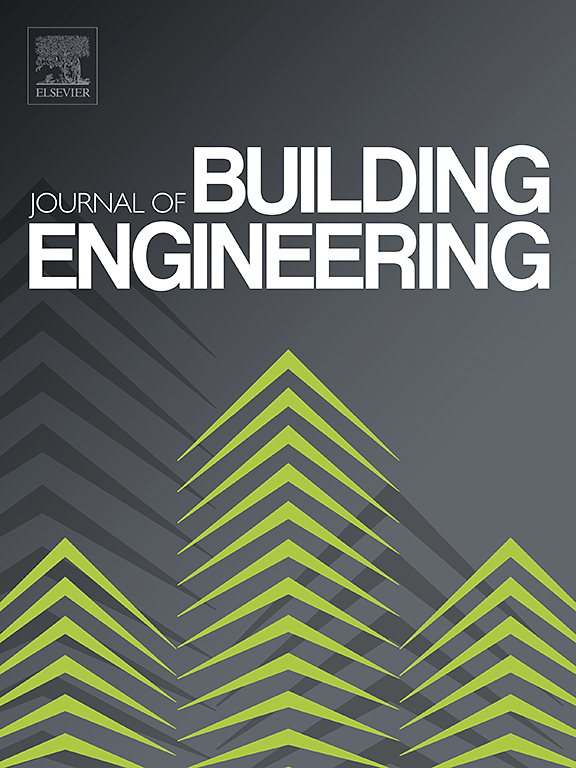纳米二氧化硅改性碱激活热激活再生水泥的力学性能和水化机理
IF 6.7
2区 工程技术
Q1 CONSTRUCTION & BUILDING TECHNOLOGY
引用次数: 0
摘要
废弃混凝土的回收和再利用对于减少环境污染、减少资源浪费和降低碳排放至关重要。然而,目前利用碱活化和热活化的协同效应来改善再生水泥(RC)性能的效果并不理想。因此,本研究探讨了掺入纳米二氧化硅(NS)对碱活化和热活化 RC 的机械性能和水化机理的影响。研究的重点是热活化温度为 750 °C、RC 替代率为 30 %、碱含量为 6 % 的水泥砂浆。研究采用了热重分析 (TG-DTG)、X 射线衍射 (XRD) 和扫描电子显微镜 (SEM) 等多种分析技术来评估不同 NS 用量(1 %、2 %、3 % 和 5 %)对纳米改性碱活化和热活化 RC 砂浆的机械性能和水化特性的影响。研究揭示了 NS 增强碱活化和热活化 RC 微观结构的机理。实验结果表明,随着 NS 含量的增加,RC 的抗压和抗折强度先增加后降低。当 NS 含量为 2% 时,达到了最佳强度,与不含 NS 的 RC 相比,抗压强度提高了 31.5%。在此剂量下,RC 在水化加速期表现出更高的水化速率。此外,RC 的初始水化热释放率随着 NS 含量的增加而增加。虽然 NS 的加入并没有改变 RC 的相组成,但它激活了 RC 的水胶凝作用,使组分中的 CaO 和石膏等游离活性物质溶解并发生反应,在水化反应开始时形成 Aft。NS 表面的不饱和键(≡Si-O- 和 ≡Si-)吸收了 RC 中的 Ca2⁺ 和 OH-,促进了 C2S 和 C3S 的水化。然而,过量的 NS 含量(大于 3%)会导致 RC 强度下降并形成更多裂缝。这主要是由于过量的 NS 颗粒不利于增加有效成核点,导致团聚、大孔隙增加以及过渡孔隙和凝胶孔隙减少,从而对微观结构产生了负面影响,进而降低了 RC 的机械性能。我们的研究结果加深了人们对纳米材料在碱活性 RC 中作用的理解,为进一步研究高性能再生水泥材料提供了宝贵的见解。本文章由计算机程序翻译,如有差异,请以英文原文为准。
Mechanical properties and hydration mechanism of nano-silica modified alkali-activated thermally activated recycled cement
The recycling and reuse of waste concrete are crucial for reducing environmental pollution, minimizing resource waste, and lowering carbon emissions. However, current efforts to improve the performance of recycled cement (RC) using the synergistic effects of alkali activation and thermal activation have been suboptimal. Therefore, this study explores the influence of nano-silica (NS) incorporation on the mechanical properties and hydration mechanism of alkali-activated and thermally activated RC. The research focuses on cement mortar with a thermal activation temperature of 750 °C, an RC replacement rate of 30 %, and an alkali content of 6 %. Various analytical techniques, including thermogravimetric analysis (TG-DTG), X-ray diffraction (XRD), and scanning electron microscopy (SEM), were used to evaluate the impact of different NS dosages (1 %, 2 %, 3 %, and 5 %) on the mechanical properties and hydration characteristics of nano-modified alkali-activated and thermally activated RC mortar. The study reveals the mechanism by which NS enhances the microstructure of alkali-activated and thermally activated RC. The experimental results show that as the NS content increases, the compressive and flexural strengths of RC initially increase and then decrease. The optimal strength was achieved with a 2 % NS content, with a 31.5 % increase in compressive strength compared to RC without NS. At this dosage, RC exhibited a higher hydration rate during the acceleration period of hydration. Additionally, the initial hydration heat release rate of RC increased with rising NS content. While NS incorporation did not alter the phase composition of RC, it activated the pozzolanic effect of RC, causing free active substances such as CaO and gypsum in the components to dissolve and react to form Aft at the start of the hydration reaction. The unsaturated bonds (≡Si-O- and ≡ Si-) on the surface of NS absorbed Ca2⁺ and OH⁻ from the RC, promoting the hydration of C2S and C3S. However, excessive NS content (greater than 3 %) led to a decline in RC strength and the formation of more cracks. This is primarily due to the excess NS particles not contributing to an increase in effective nucleation sites, causing agglomeration, an increase in large pores, and a reduction in transition and gel pores, which negatively affected the microstructure and thus reduced the mechanical properties of the RC. Our findings enhance the understanding of the role of nanomaterials in alkali-activated RC and provide valuable insights for further research into high-performance recycled cement materials.
求助全文
通过发布文献求助,成功后即可免费获取论文全文。
去求助
来源期刊

Journal of building engineering
Engineering-Civil and Structural Engineering
CiteScore
10.00
自引率
12.50%
发文量
1901
审稿时长
35 days
期刊介绍:
The Journal of Building Engineering is an interdisciplinary journal that covers all aspects of science and technology concerned with the whole life cycle of the built environment; from the design phase through to construction, operation, performance, maintenance and its deterioration.
 求助内容:
求助内容: 应助结果提醒方式:
应助结果提醒方式:


